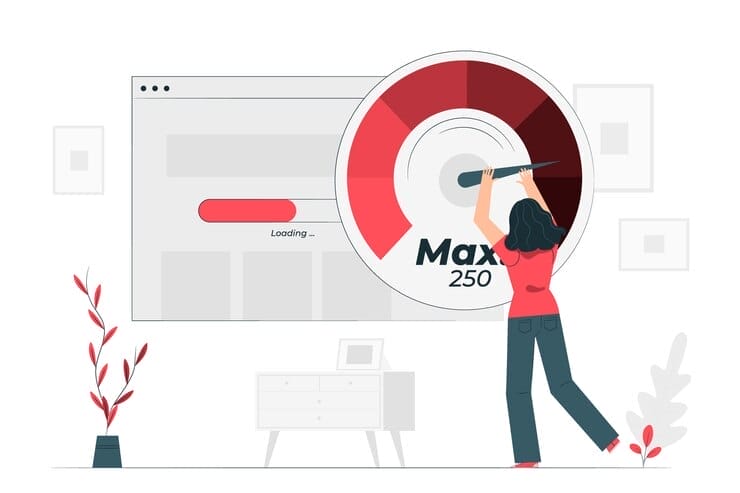introduction to target marketing
A target market is a subset or segment of the total market comprising people with similar characteristics to whom a company markets its products and services. In other words, a target market is a group of people whom a business’s products and/or services are aimed. While customers may emerge from the total market, a target market consists of customers who are most likely to buy what an organization sells.

Target marketing is the process of researching and understanding the interests and needs of your prospective customers to focus your message and marketing budget on the specific segment of the market most likely to purchase your product or service. It leverages on the concept of market segmentation.
On the other hand, mass marketing is a strategy that avoids market segmentation. Mass marketing does not create separate campaigns for different market segments. Instead, it conducts a single campaign across the entire market. Companies that sell widely appealing products or services find mass marketing particularly attractive—for example, MTN and Dangote Group.

Why are Target Markets Important?

According to a CoSchedule study, marketers who documented their marketing strategy were 414 percent more likely to succeed than those who did not.
One of the first steps in starting (and growing) a business is identifying its target market. Identifying your target market is an essential aspect of business planning, and just like business planning, it is a continuous process, not a one-time event.
A thorough understanding of a target market can help a business to gain a clear understanding of its potential customers so that marketing efforts can be directed accordingly. Target marketing also allows businesses to appeal to their customer base while meeting their overall marketing objectives.
How to Define a Target Market

Market segmentation divides a target market into categories based on similarities to identify potential growth areas. Market segmentation helps businesses reduce risk by determining which products are most likely to capture a share of a target market and the best ways to market and deliver those products to the market.
Marketers can use market segmentation to identify the key characteristics that define their target market and tailor marketing efforts to their specific needs, interests, and personalities.
Answering the Who, Where, How, and Why Questions
Who: Demographics
Who needs your product or service? First, you need to identify the basic demographic information of your prospective customers, such as their ages, genders, family sizes, educational levels, and occupations.
For example, “Our target customer is a semi-literate woman between the ages of twenty-five and thirty-five who has a small family, a blue-collar job, and earns an average income.”
Where: Geography
Where exactly are your customers? Where are their streets and towns? Second, you need to determine where your customers live, such as the size of their area, population density, and weather.
“We believe that our customers are more likely to earn median incomes and live in suburban areas with mild weather throughout the year, such as Owo in Ondo State,” for example.
Why: Psychographics
What distinguishes you from your competitors? How devoted are your customers to you or your rival? What makes your customers stick with you or your competitor? Knowing why your customers buy your product can determine how much and how frequently they need to buy it. You need to determine your selling point and leverage it.
For example, “We believe our customers likely purchase a new pair of canvas every quarter. They seek to be in vogue at every point in time. We believe that the fact that no one else in Aba manufactures shoes like ours will appeal to them.”
How: Behaviours
How do your customers behave? Customers buy products to fill a need, but how do they perceive those needs? What are their thoughts about your product? What information do they have about this need or how your product addresses it, and do they get it online or offline? Why do your customers make the decisions that they do? This personality and lifestyle data will help determine your customers’ purchasing habits.
For example, “Our customers, in general, are impulsive buyers; they want to know and buy the best products in town, and they are likely to conduct several online searches to get what they want.”
Digital Market Research

After answering the Who, Where, How, and Why Questions, you will develop a hypothesis. However, it would be best if you did not let your ego get in the way of figuring out whether your assumption is correct. Finding out your mistakes at this stage is something to educate and excite you, not depress or slow you down.
New technologies can potentially make finding the demographics and psychographics of your customers much easier, faster, and cheaper than in the past. At the barest minimum, you should discover your customers’ genders, ages, addresses, income ranges, locations, interests, and hobbies using new technologies!
- Begin with social media: Most social media platforms provide a free demographic breakdown of your followers in the backend analytics section. For example, Facebook provides Facebook Insights, Instagram provides Instagram Insights, Twitter provides Twitter Insights, LinkedIn provides LinkedIn Insights, and YouTube provides YouTube Analytics. There are also several efficient third-party web page analytics tools; that harness them.
- Take advantage of email addresses: Software like TowerData, Zoho, and MailChimp can pull detailed demographic information for you if you have your customers’ email addresses. Create email marketing campaigns where you consistently communicate to your target market in the language they understand.
- Analyze your sales data: If your business is already up and running, data from your payment processor or inventory history may also be helpful. For example, what do your customers buy frequently? How much does the average customer spend in your store? What is the busiest time of day? When do purchases increase, and when do they decrease? By analyzing your sales data, you can develop a hypothesis to explain the fluctuations in sales.
- Ask your customers: Customer surveys can be conducted via email, phone, or person. You don’t need many participants to learn more about your customer base; you can learn from just ten good conversations. If you’re concerned about finding survey participants, do a giveaway. Everyone likes giveaways.
Target Market Strategies
You can market your product or service to your target market using various strategies. However, the exact method that you employ will be heavily influenced by the target market you have identified.
Differentiated Marketing

Differentiated marketing is a marketing strategy in which a company develops various marketing campaigns to appeal to multiple target audiences. Businesses can more effectively articulate their value proposition to different market segments and, ideally, increase the success of their marketing strategy by differentiating their marketing campaigns.
Differentiated marketing necessitates businesses to devote more of their budget to creating various marketing campaigns to reach diverse segments. As a result, differentiated marketing is an excellent strategy for companies selling goods and services to a target market comprising distinct target audiences.
For example, Maruti Suzuki is a trusted automobile manufacturer in India. The company employs differentiated marketing to reach a diverse range of consumer segments. It offers a variety of promotional offers for low-cost vehicles such as the WagonR or Alto, with unique messaging strategies for each product. Similarly, it caters to the high-spending consumer segment by promoting high-end cars like the S-Cross and Baleno.
Niche Marketing

Niche marketing is a marketing strategy in which an organization focuses all its marketing efforts on a unique and distinct target market. As a result, niche marketing frequently targets market gaps where specific customers’ needs are not currently being met.
Businesses that target a niche can create highly targeted advertising campaigns that appeal to their specific market. As a result, these efforts are well-suited to smaller businesses looking to enter an already crowded marketplace that still contains several particular gaps that are currently unfilled.
A PwC survey of 669 CEOs found that 78 percent believe remote collaboration is here to stay. For example, Freelancer At Work is an organization that offers products to attract potential clients to the freelancer niche market. They sell laptop decals that promote what you do regardless of where you work. Keeping these remote workers’ motivations and lifestyles in mind helps Freelancer At Work achieve their organizational goals.
Micromarketing

Micromarketing is a marketing approach that focuses on small groups rather than a larger group of people. The target audience of a micro-marketing campaign is typically defined by characteristics such as age, job title, geographic location, or gender. Micromarketing is a marketing effort that targets a particular group and can be more expensive than other marketing strategies, such as mass marketing. In practice, micromarketing is best suited for target audiences where the benefits outweigh the potentially costly effort required to reach them.
When P&G launched its Pantene Relaxed & Natural shampoo and conditioner product line, it created and ran a one-of-a-kind marketing campaign to target African American women. When Uber wanted to expand its geographic reach, it used big data from social media platforms to learn more about the specific transportation issues in each city. The company’s client base grew due to the customized promotions and referral benefits.
Final Thoughts
When you launch into new markets, always remember that target marketing is a more effective way to market to those whose needs your products or services are specifically designed to meet. Casting a wide net may be ineffective, except you sell a widely appealing product like airtime.
So, which strategy is right for your business? Please leave your thoughts in the comments section below.
RELATED: Benefits of Market Segmentation
You love this article, right? Get more updates via Adilo’s Twitter Page.








